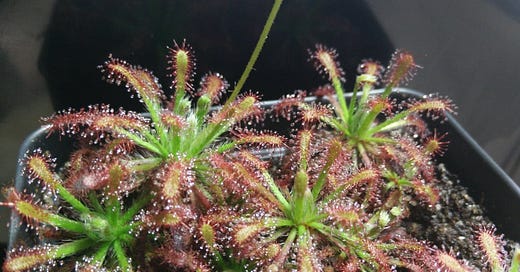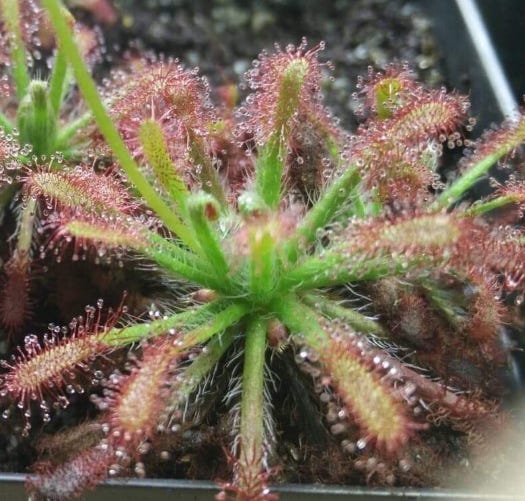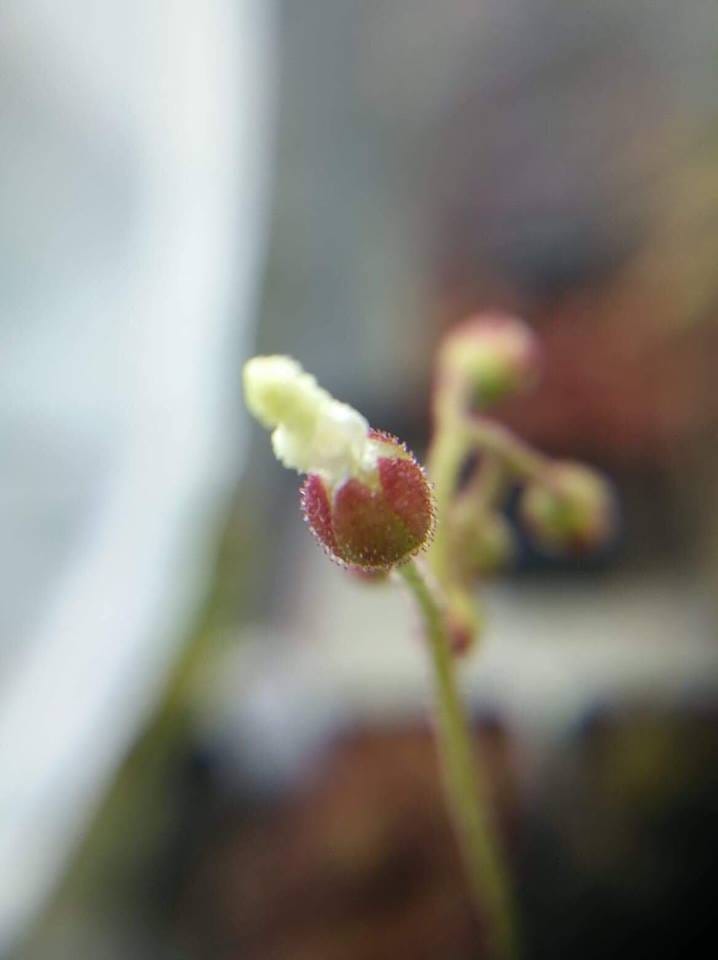SPECIES PROFILE: DROSERA NEOCALEDONICA
Should you grow it warm? Should you grow it cold? This rare sundew has conflicting cultivation information everywhere!
Drosera neocaledonica is a curious little plant that isn’t seen too often in collections. Part of that may be attributed to the fact that there does not seem to be a wide consensus on how to grow this species - some growers have success with a hot, humid treatment, while others report best results with highland temperatures.
Introduction
D. neocaledonica is endemic to the French territory of New Caledonia, a remnant island of the old French Empire situated some 1,200 km (750 miles) east of the Australian mainland in the South Pacific. D. neocaledonica grows primarily in wet, sunny habitat such as seepages, shores of freshwater bodies of water, and flooded meadows. Plants have been observed growing partially underwater. Unlike other Drosera, which generally prefer peaty or sandy habitats largely devoid of minerals, D. neocaledonica is quite at home in iron and aluminum oxide-rich laterite soils and gravel. In fact, it is one of only two species in the genus currently known to not only tolerate, but also prefer lateritic soils, the other being D. ultramafica.
Populations of D. neocaledonica are most densely concentrated on the southern side of the island, where it grows at elevations from sea level to 1000m. Humidity is influenced by the prevalence of trade winds and is usually high throughout the year at around 75% RH. At high elevations in the island interior, temperature lows may approach freezing during winter. At sea level during the summer, temperatures as high as 35C (95F) have been recorded, while winter temperatures average around 16C (60F). Due to the wide range in its elevation, plants from different populations may demonstrate varying tolerances of different temperature ranges. As many of the plants in cultivation do not have location or elevation data attached, this may contribute to the confusion regarding their temperature preferences.
Light, Temperature, Humidity, and Media
I have had the most success treating my D. neocaledonica similarly to South American species of Drosera. This means day temperatures of approximately 75 degrees, night temperatures of approximately 60 degrees, high humidity, and bright, direct light. It’s worth noting that some low-elevation populations of D. neocaledonica may prefer warmer conditions. However, since lowland plants are typically more tolerant of highland conditions than vice-versa, I would recommend trying highland conditions first and then adjusting accordingly if your plants do not seem to be doing well.
Medium, Watering, and Feeding
Most Drosera can be grown in either long-fibered sphagnum or peat-based mixes, but that does not seem to be the case for D. neocaledonica. D. neocaledonica displays a clear preference for peat-based mixes; myself and many other growers have observed this. I’ve had the most success growing my plants in a simple 50/50 mix of peat and quartz sand. I keep the medium moist; this species should be fine as long as it isn’t kept bone dry or sopping wet. (Yes, I know that plants grow submerged in water in the wild. However, there are often factors at play in wild populations that simply cannot be replicated with success in the artificial conditions of a terrarium or greenhouse). Like all other Drosera, feeding will lead to healthier, larger, and faster-growing plants. Do not use any sort of root-based fertilization on this species.
Flowering and Reproduction
D. neocaledonica reproduces proliferously from leaf cuttings and root cuttings. However, since these are fairly slow-growing plants, chopping up your plant’s roots and/or leaves will likely lead to it looking upset for at least a few months. D. neocaledonica flowers occasionally (I’m still unsure what factors trigger flowering) and is indeed self-fertile. However, manual self-pollination is required to have a decent seed set. If pollinated correctly, this species is extremely proliferous; each flower stalk can easily produce close to 1,000 seeds.
The Big Picture
With its silvery hairs, red lamina, and green petioles, D. neocaledonica is an extremely stunning sundew. It gets a bad rap as being hard to cultivate due to the wide range of conditions that various populations grow in; some are closer to lowland while others are highland. However, in their ideal conditions, these plants are quite vigorous and highly rewarding. I hope to see them appear in more collections (and since my plants have recently flowered, I may be instrumental in making that happen).
References
Fleischmann, A., Robinson, A. S., McPherson, S., Heinrich, V., Gironella, E., & Madulid, D. A. (2011). Drosera ultramafica (Droseraceae), a new sundew species of the ultramafic flora of the Malesian highlands. Blumea, 56, 10-15.
Gibson, R. (2001). Drosera neocaledonica: its origins, habitat, and cultivation. Carnivorous Plant Newsletter, 30(2), 37-42.







